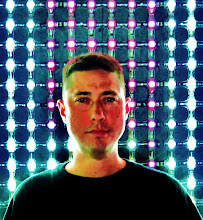
"A journey is best measured in friends, rather than miles."
- Tim Cahill
THANK YOU!
Here in the U.S. it's Thanksgiving, which has gotten me thinking about all the people I owe a debt of gratitude to for being there for me this past year. You made this experience a whole lot more fun, rewarding, and hassle-free than it possibly could have been otherwise.
First of all, I'd like to thank everyone who offered support, advice, and encouragement when I decided to embark on this crazy year-long adventure, and to those friends and family members who dutifully kept in touch with me via e-mail during the year--you know who you are! Believe me, a few friendly words from home go a long way when you're in unfamiliar surroundings on the other side of the world.
Next, a shout-out to the good friends who helped me "take care of business" stateside; specifically Leonard, Allison and Ben for keeping my car safe and in good working order; and Tony, Chad, and Kevin for their assistance in storing my stuff and helping me get settled on my return. Big thanks, too, to Ric for keeping up the Not Lost Dammit! website and for posting all those pictures and captions.
Next, I have to single out my good buddies who traveled halfway around the world to meet up with me in exotic locales: Specifically, Eric Iversen, who flew from Norway to help me explore the wilds of Tasmania; Tom Jones, who came all the way from Gainesville, Florida (go Gators!) to meet up with me in Sydney, Australia; and Bill Moore, who took time out from his whirlwind tour of Asia to make my second trip to Hong Kong so stress-free and fun. Oh, and of course my mom and brother Mike, who met up with me in Hong Kong the first time! Traveling the world is great, but seeing those places with friends and family is a hundred times better. Many thanks, too, to Christian Clay and Jin Shu for showing me a great time (and offering me a place to stay!) in Beijing. You guys rock!
Of course, I also have to thank all the wonderful new friends I made during the course of my travels. Even if it was just for an afternoon, I'm so grateful to have shared some time with y'all. Among the many friendly folks I met from all over the world, the following definitely merit a mention: Thomas, Laura, Rhett, Jack, Gareth, Irene, Peter, Teresa, James, Gemma, Kate', Mick, Bjornar (BJ), Ben, Kay, Neal, Charis, Chris, Cynthia, Ed, Colin, Candace, Bridget, Craig, Andrew, James, Andrew, Rachel, Doug, Marko, Jonas, Richard, Ali, Greg, Karen, Matt, Ping, Manuela, Max, Mike, Dennis, Alex, Pete, Katherine, Des, Sven, Brett, Camilla, Laurens, Matt, Andy, Liz, Peter, Brian, Mark, Kyle, Henrik, Chase, Kara, Rose, Tom, Patrick, Kim, Peter, Henrik, Smeeta, Ernest, Steph, Alex, Jeffrey, AJ, Ashley, Laura, Ali, Becks, Helen, Dan, Ian, James, Mando, Pete, Selena, Amer, Matthew, Kim, Gemma, Sammy, Matt, Serkan, Kyle, Daniel, Pia, Greg, Laura, Andrea, Derek, Mark, Rob, Charlie, Charlotte, Justin, Karine, Olivia, Mike, Raymond, Benoit, Bhagwant (Pinto), Amit, Jack, Raphael, and Vincent.
Whew! Hope I didn't leave anyone out. :-) Anyway, thanks, guys; you really made this trip something special. And from the above, I really should single out Kyle, Kim, Gemma, and especially Thomas, for friendship above and beyond the call of duty.
AND LAST, BUT NOT LEAST: This trip wouldn't have been possible without the unwavering love and support of....
...Mom! Thanks for being there for me, always.
John
